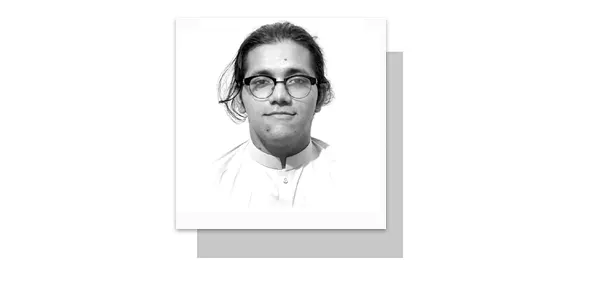THE Debt Sustainability Analysis report for 2025-27 by the Ministry of Finance is out and it reveals that Pakistan’s public and guaranteed debt has surged to a record Rs74.6 trillion (around 70% of GDP) by the end of June. This reminds me of a scene from the movie Phir Hera Pheri (2006), where Paresh Rawal, playing the role of Babu Bhaiya, pleads with creditors for a postponement, saying, “Kam say kam 30 saal ka time to de re” (trans:”At least give us 30 years’ time”). This meme, which is considered one of the GOAT in digital pop culture, is more relevant than ever in the current macroeconomic situation —a situation comical in a movie but a grim reality for Pakistan.
Although Pakistan recently secured a rollover of $12 billion from friendly countries (i.e., Saudi Arabia, China, UAE) for a year, the crucial question remains: for how many more years? The problem is not the debt itself but the unabated audacity. The gross public debt, which was around $125 billion in 2011, has grown at a compound annual growth rate (CAGR) of almost 6%. Pakistan’s debt per capita has increased from $823 to $1,108 (a growth of 35%), while GDP per capita has grown from $1,295 to $1,576 (a growth of 22%). This indicates that Pakistan’s debt is growing at a much faster rate than its income, widening financing gaps and necessitating further borrowing. In other words, a newborn in 2011 had a debt of around Rs. 70,000 and now a newborn would be burdened with a debt of more than Rs. 300,000. The pertinent question then is: why we are where we are? There is no simple answer. In Ghalib’s lingo, “Mushkilen mujh par padin itni ki asan ho gaiin” (roughly translated as: “The difficulties I face are so many that they become easy”). While this sentiment may be bearable at an individual level, at the macrocosm, the “aasan ho gayein” translates into more and more people being trapped in poverty.
Firstly, the government has failed to fix the fiscal account. From FY 13 to 24, the fiscal deficit has remained around 6.4%. Recently published federal fiscal operations figures for FY 2024 show a staggering fiscal deficit of Rs7.7 trillion. Moreover, the B-25 budget estimates the deficit for FY 2025 to be Rs8.5 trillion (a 10% increase YoY). The main culprit is not just imprudent expenditure but also the debt itself. For FY 24, interest payments accounted for Rs8.2 trillion, which is Rs2.5 trillion, or 43% higher than the previous year. Similarly, B-25 estimates debt servicing to be Rs9.8 trillion (over 56% of the budget).
The second perpetrator is the current account. Exports have remained inelastic over the years due to low productivity, limited product diversification and value addition, high dependence on a few export markets and high energy costs. Imports, on the other hand, are highly elastic and grow rapidly once restrictions are lifted. This dual deficit guarantees that economic growth remains elusive in the near future. Simply then, debt is essentially required for two reasons: to finance fiscal expenditure (including repaying existing debt) and to cover the import bill.
Ergo, any proposed solution necessitates a double whammy: achieving good governance in both fiscal and external accounts. It involves addressing imprudent expenditure, such as pension liabilities, bleeding State-Owned Enterprises (SOEs) and elitist rent-seeking. To tackle the current account deficit, the government needs to invest in development projects (emphasis on “development,” not unnecessary “infrastructural” projects), import substitution in the long-term, facilitate and attract foreign direct investment (FDI), eliminate the black economy—especially in the context of worker remittances, tax those who are not already taxed that is broadening the tax base instead of relying on excessive withholding taxes and pursue more effective policies.
—The writer is contributing columnist, based in Peshawar. He is the co-founder of the Policy Club.
(alifurqan647@gmail.com)










